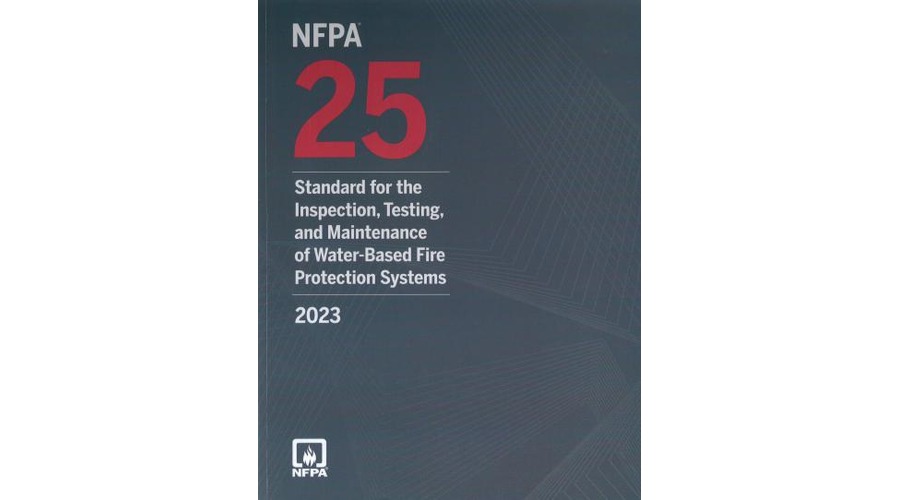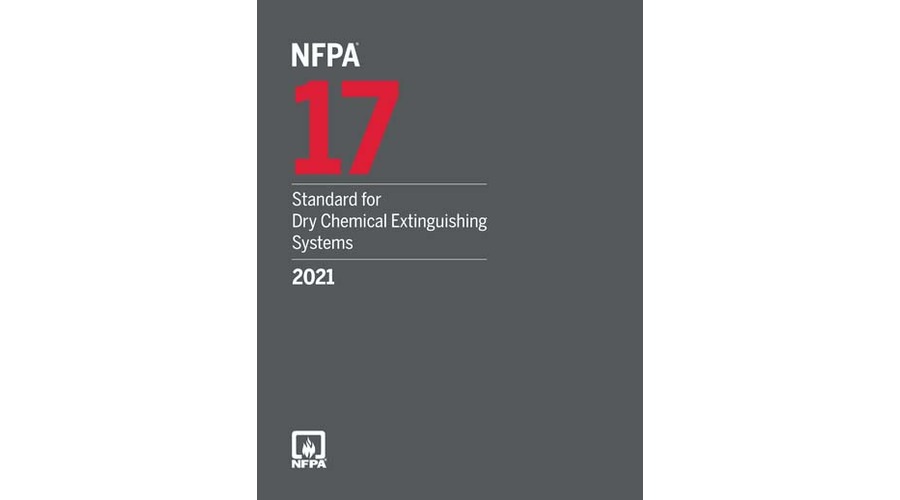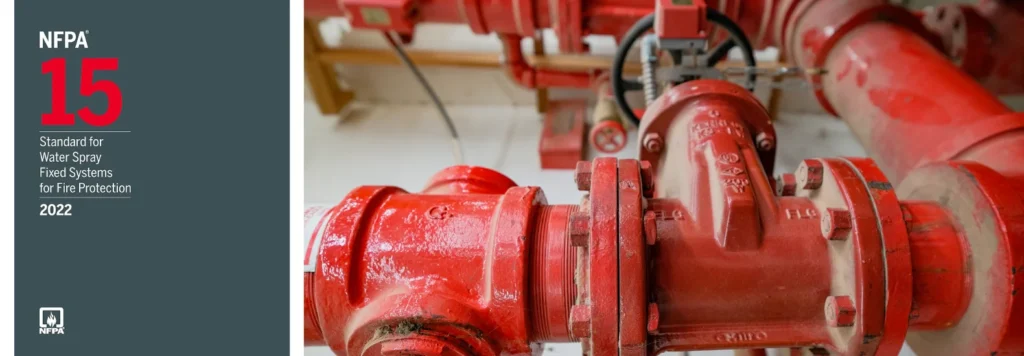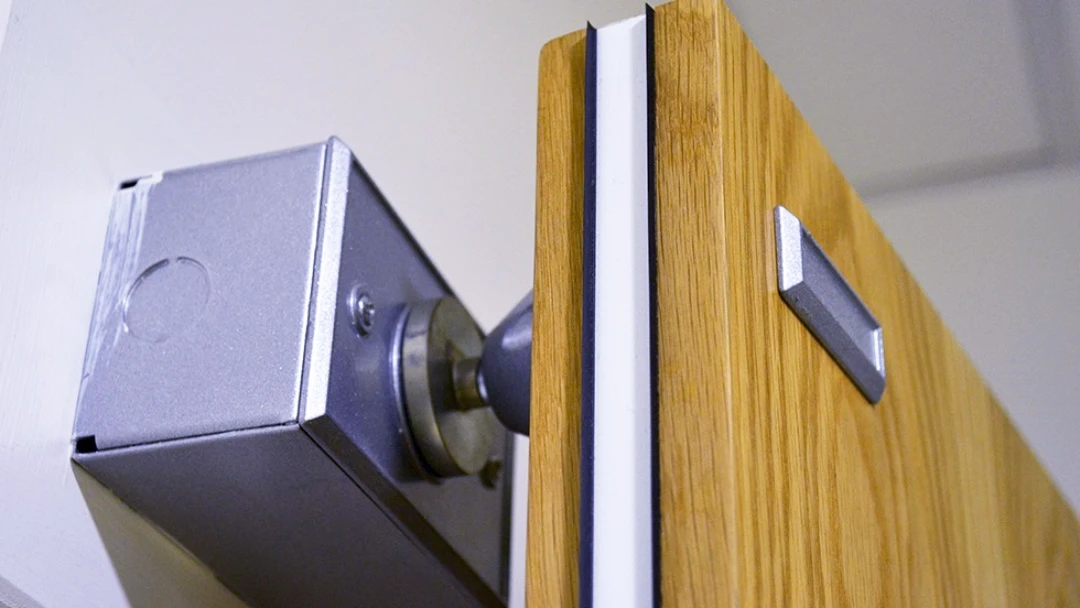

Common Fire Door Issues and How Maintenance Can Solve Them
Fire doors are a critical part of passive fire suppression systems and are required in many types of buildings. Designed to slow the spread of fire and provide extra time for evacuation, fire doors must be maintained to meet National Fire Protection Association (NFPA) codes and ensure compliance. Common fire door issues, such as misalignment, damaged seals, and faulty hardware, can compromise their effectiveness. Regular inspections are essential to identify these issues and protect your building and occupants during an emergency.
Common Fire Door Issues
The following are some of the most common issues that can negatively impact a fire door’s functionality:
Misalignment
Fire doors must fit properly to seal and keep out flames and smoke. If doors aren’t installed properly or the building settles over time, the door may sag or drag on the floor, leaving exposed gaps.
During maintenance checks, make sure the door allowances are appropriate. You may need to adjust the hinges or the frame if the door isn’t lined up properly.
Faulty or Damaged Closers
You should be able to open a fire door with a reasonable amount of force, and its closers shouldn’t interfere with that. When closing, the fire door should shut with a gradual controlled pull — without any loud noises or jams. If there is a latch bolt installed, it should engage fully.
Loose Door Hinges
Loose door hinges can interfere with a fire door working properly by preventing it from closing or sealing completely. You should regularly inspect the hinges for signs of wear, looseness, or damage. Tighten screws if any are loose, and lubricate the door hinges periodically for optimal performance.
Faulty Latching Mechanisms
To be effective, fire doors need to close completely whenever they’re not in use. The locking mechanism ensures the door shuts firmly to compartmentalize the area it’s protecting. To check your latching mechanism, look for any signs of misalignment or damage. Check to make sure the lock extends fully when its closed. If it isn’t working correctly, you may need to remove it and install another to fix the problem.
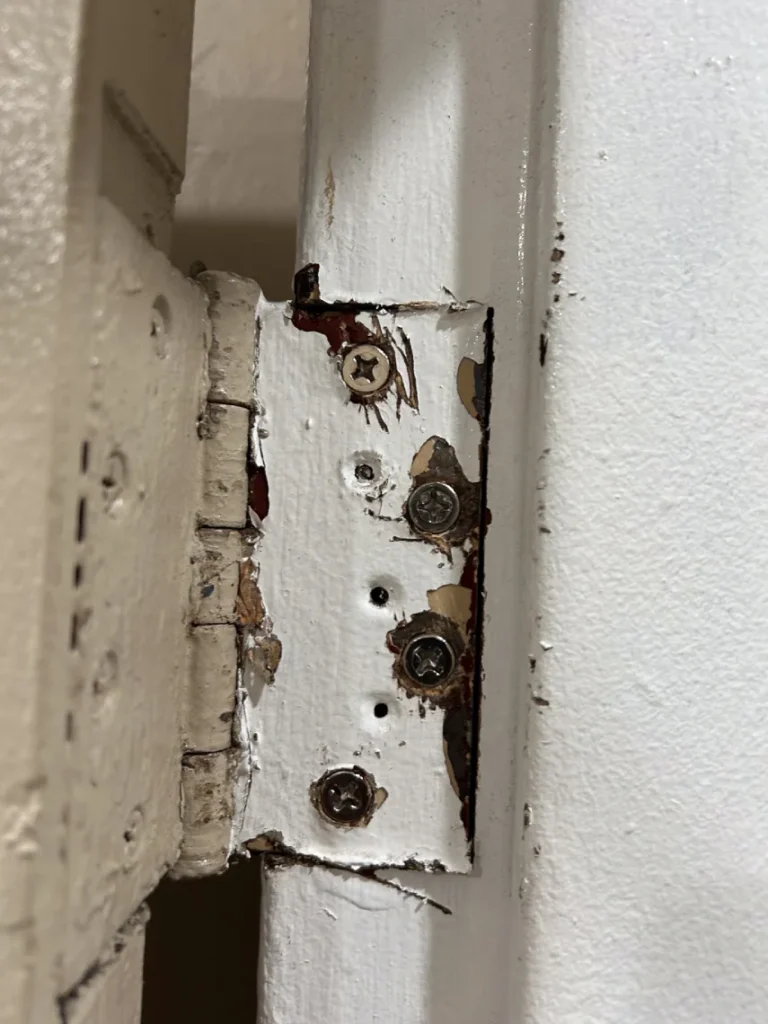

Problems With Intumescent Seals
Intumescent sealing isn’t always noticeable on the fire door. The material is activated by heat and expands to fill the gaps around the door. This keeps the smoke or fire from spreading under the door or around the sides. If the seals are broken or missing, the door won’t perform as expected. Regularly check the sealing strips around your door and replace them if you notice any damage or gaps.
Blocked or Propped Doors
Faulty fire doors aren’t always the result of mechanical problems with the door. If people block the door from closing or wedge it open with a door stopper, it can’t work as designed. The people in your building should be trained on how fire doors work and avoid blocking them or propping them open.
Missing or Obscured Signage
Fire doors should be properly labeled, and the labels should be legible. If your building is being painted, it’s easy to accidentally paint over the door labels. Other common ways to obscure labels are by cleaning them with harsh chemicals or removing them completely.
Fire door labels should provide the information required by applicable regulations. This typically includes information that clearly identifies the fire rating, manufacturer, installation date, certification authority, and unique identifier. If your label is damaged or removed, be sure to put up a replacement or — for a more permanent solution — engrave the information onto the door.
In addition to being legible, fire door labels must be placed correctly. They need to be displaced in a prominent location on the door and the frame.


Book Your Free Consultation Today
Our fire door services cover thorough maintenance, testing, and inspections to ensure your fire doors meet safety standards. We provide detailed reports and offer round-the-clock support, so you can have peace of mind knowing your property is protected.
Fire Door Service Maintenance Best Practices
Don’t wait until you fail a fire door inspection to check your fire doors. You can extend the lifespan of fire doors with regular maintenance and repair. Keeping your fire doors in proper working order can save lives. The following best practices will ensure compliance with fire door regulations and help guarantee they’ll work when they’re needed.
Implement a Regular Maintenance Schedule
Make fire door inspections a routine part of your maintenance plan. Perform in-depth inspections on a yearly basis and lighter ones more frequently. If you notice any issues at other times, address them immediately.
Training and Education
Train the people who work in your building on fire door regulations and why they matter. Make sure they understand that they should avoid blocking the doors or wedging them open as well the dangers of obscuring the labels.
Your education plan should include an emergency response plan that includes the proper procedures for using the fire door. Keep all records related to your fire door, such as inspections and maintenance procedures, with your emergency response plan.
Work With Experienced Professionals
Maintaining compliance with fire safety regulations takes a rigorous, comprehensive approach. Working with the professionals at KORD Fire Protection can help you with all of your fire protection system needs. Reach out today to learn more.
Fire Door Issues FAQS
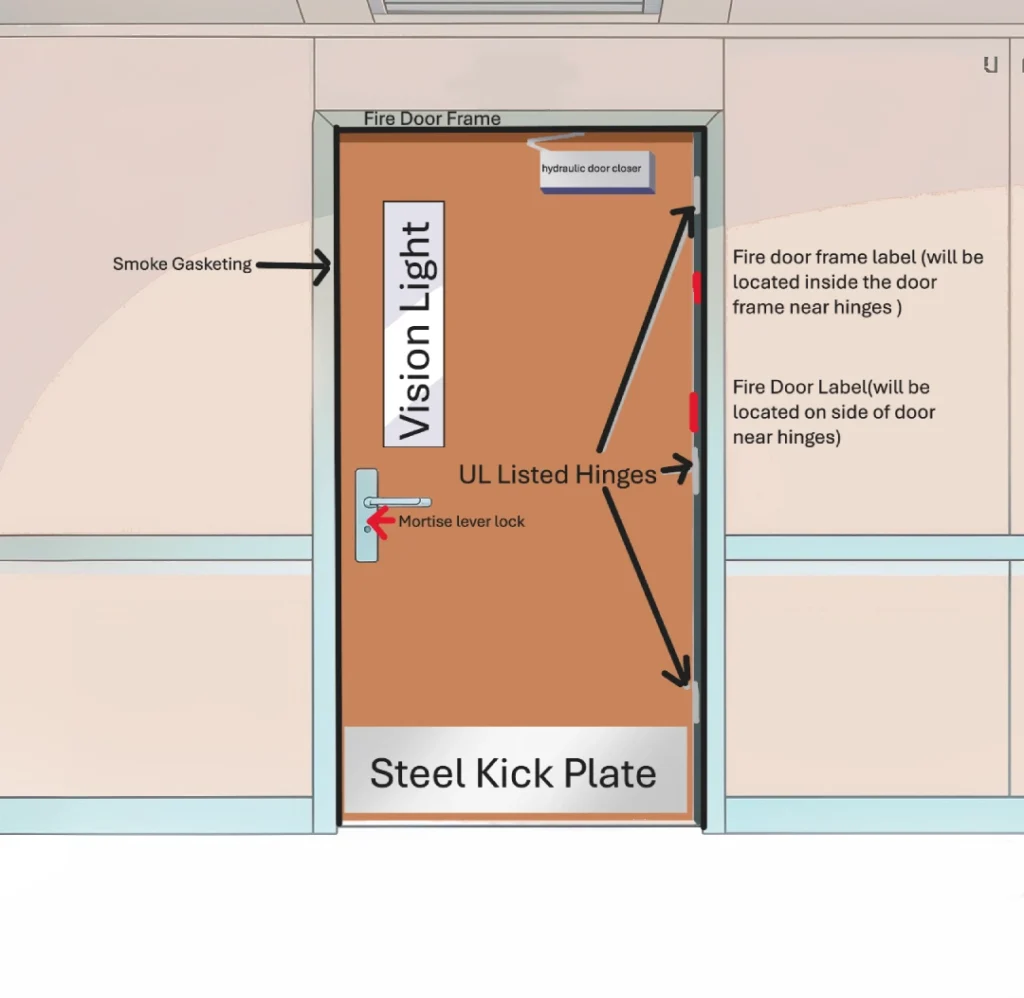

Get Top-Rated Fire Safety Solutions!
Kord Fire Protection is your go-to when it comes to all things fire protection. For over 20 years, we’ve been serving Southern California with the quality service and equipment to keep your home or business safe at all times. Our competitive prices reflect our unwavering commitment to protecting what matters most in the event of a fire emergency. Give us a call, send an email, or use that form!


Protect Your Property
Get the latest fire safety tips delivered straight to your inbox.

